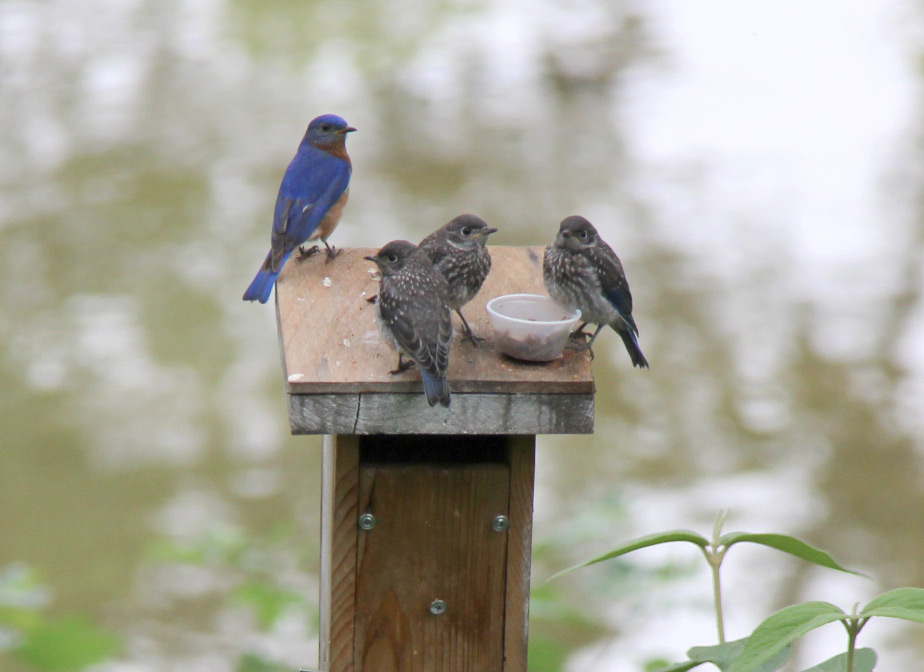1. Install a nestbox specifically designed for bluebirds. Put up multiple boxes in a variety of styles: Peterson, NABS, Troyer slot-box, Gilwood, Gilbertson, round or square PVC, Carl Little box, et al. The Bluebirds will pick their favorite.
2. Select the right habitat for your nest box. Bluebirds like semi-open grassland areas, such as mowed lawns, meadows, orchards and rural roadsides. If you happen to live adjacent to a golf course, church, school, community park or light industrial park, you are very fortunate. Bluebirds also love power lines, fences and small trees to perch on.
3. Leave your nest boxes up year round. Birds checking out future nest sites in the fall might find yours and return to it and nest in the spring. They may roost in it all winter and find shelter during nasty winter storms. Bluebirds may stay the entire winter and not migrate.
4. Clean out your boxes. Bluebirds won’t use a box that is filled with with sticks or a grass/straw nest filled with feathers. If you have paper wasps in your area, use a bar of soap on the inside of the roof or paint with liquid soap.
5. Offer meal worms. Bluebirds can’t resist them and they are like a magnet for attracting bluebirds. If bluebirds don’t nest in your boxes, at least you might get to watch them feed.
6. Reduce local House Sparrow populations and competition. House Sparrows harass Bluebirds, and can peck eggs and kill nestlings & adults. DO NOT permit a House Sparrow to use your Bluebird nest box ! There are passive methods: fishing line and sparrow spookers on boxes. There are active controls: trapping and “relocation”. Sometimes it takes a combination of both.
7. Put out a birdbath. Bluebirds love water and may prefer running or dripping water. A birdbath should be 3″ deep with gently sloping sides. Locate it 15 feet away from trees or shrubs where cats may hide. Change the water every few days to keep it fresh. A “heated birdbath” will provide water all winter.
8. Plant native plants that produce berries that bluebirds like. For example, trees: American holly, black cherry, crabapple, mountain ash, kousa dogwood, red mulberry, flowering dogwood, hawthorn, eastern red cedar, sumac.
Shrubs: blackberry, blueberry, chokecherry, elderberry, viburnums, bayberry, juniper, highbush cranberry, winterberry, serviceberry, pokeweed, currant, firethorn, hackberry, arrowwood. Vines: poison ivy, grape, Virginia creeper.
9. Bluebirds love to build white pine needle nests. It is nice to have white pine trees near your nest boxes. Place a few pine needles inside the box ——– and throw a few handfuls on the ground near the box. This might help get them started on a nest.
10. Place an “attraction spot” on the roof or sides of the box. A 1.5″ fake
entrance hole may attract bluebirds passing by that your box is a suitable nesting box. This spot can be made of plastic, metal or wood — paint it black.

